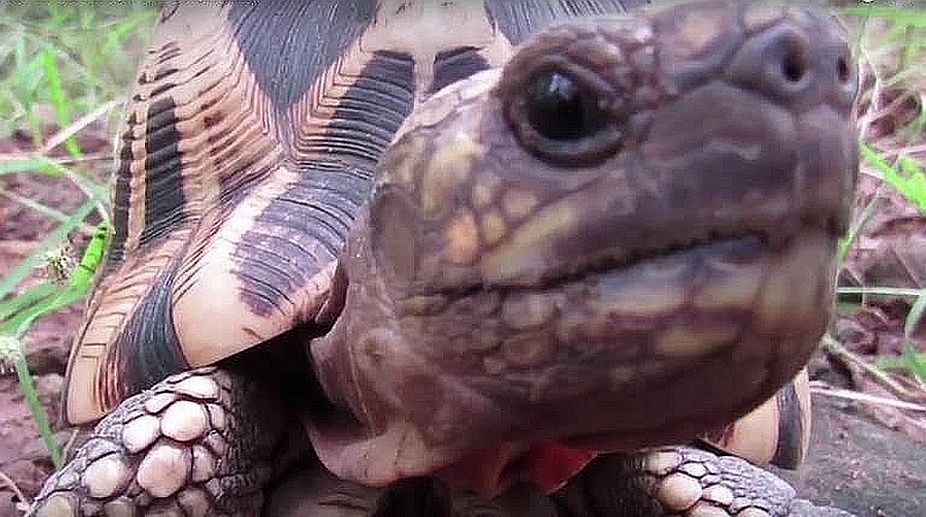NE concern over escalating violence in Myanmar
But lately, the soldiers have been abandoning their outposts and various strategic points to avoid the hit of AA offensives, added Ohmar.

Burmese star tortoise (Photo: WCS Myanmar)
The population of critically endangered Burmese star tortoise, endemic to Myanmar and once considered extinct in nature, has multiplied to more than 14,000 through captive-breeding programmes, the US-based Wildlife Conservation Society (WCS) said on Thursday.
Its population is currently growing 37 per cent per year in breeding centres in Myanmar and approximately 750 of the captive-bred have been released into protected habitats, it said.
Advertisement
“This is the modern day equivalent of saving the bison from extinction. A team of conservationists spearheaded an aggressive captive breeding effort and have brought an animal back from the brink to where it now has the potential to be reintroduced into the wild in large numbers,” an official statement quoted Steven Platt, WCS herpetologist in Myanmar, as saying.
Advertisement
The medium-sized Burmese star tortoise is found only in Myanmar’s central dry zone.
Efforts to restore the tortoise are mentioned in the latest issue of the peer-reviewed journal Herpetological Review.
Burgeoning demand from wildlife markets in southern China beginning in the mid-1990s virtually wiped out the tortoise in a matter of years until viable populations could no longer be found and the species was considered ecologically extinct.
In 2004, the Nature and Wildlife Conservation Division of the Myanmar Ministry of Natural Resources and Environmental Conservation in collaboration with the WCS/Turtle Survival Alliance Myanmar Program established three “assurance colonies” to hedge against the extinction of wild populations.
The three colonies began with an estimated 175 individuals, mostly confiscated from illegal wildlife traffickers.
The colonies were sited at facilities within existing wildlife sanctuaries.
After the colonies were established, conservationists had to determine the species’ husbandry requirements including diet, feeding, reproduction, and hatchling care.
Herpetologists from WCS’s Bronx Zoo in the US helped design the breeding centres as well as provide husbandry expertise.
In addition, veterinarians and molecular scientists from the Bronx Zoo conducted health screenings of the captive population to determine what diseases might be present. However, no major diseases of concern were discovered.
The long-term objective of restoring viable populations of the Burmese star tortoise in every protected area in the central dry zone is now biologically attainable.
However, political and social challenges need to be resolved before large-scale reintroduction takes place to ensure the tortoises are not taken by poachers, the WCS said.
The WCS tortoise conservation in Myanmar is supported by the Leona M. and Harry B. Helmsley Charitable Trust, the Andrew Sabin Family Foundation, the Panaphil and Uphill Foundations and the Turtle Conservation Fund.
Advertisement